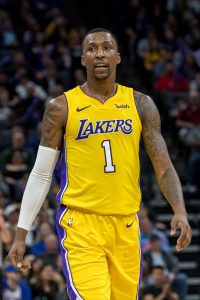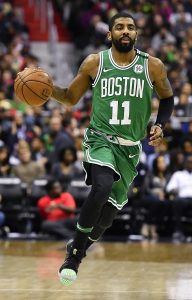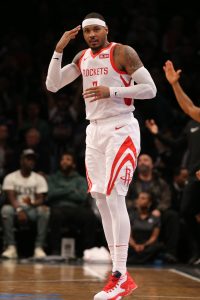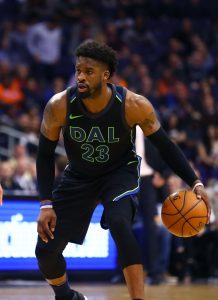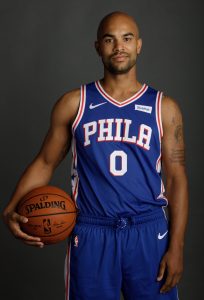“It is critical to be cycle aware in a talent-driven league. In a situation like yours at the Sixers, where a variety of circumstances left you near a trough in the cycle [and falling], amplifying this cycle became crucial. Today’s outcomes for every team are heavily impacted by decisions past [who to draft, sign, trade, hire, etc].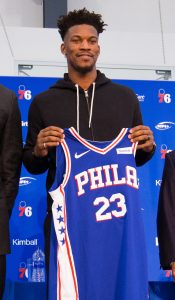
Jeff Bezos says that if Amazon has a good quarter it’s because of work they did three, four, five years ago—not because they did a good job that quarter.”
Former Sixers GM Sam Hinkie wrote those words in his infamous 13-page manifesto, in which he expanded on the idea of having the longest view in the room. Hinkie discussed the moves the Warriors made to set up their dynasty, how Boston was able to land Kevin Garnett a decade ago by planning ahead, and how the Rockets and Spurs were able to bring James Harden and LaMarcus Aldridge to their respective Texas clubs.
This past weekend, the Sixers “ended” The Process by making their move for a star; the event was years in the making.
They found their missing piece by adding Jimmy Butler and trading away two of Hinkie’s gems in Robert Covington and Dario Saric. The deal signals the end of a long journey, one that sets the franchise up to become a true title contender. The path wasn’t easy. The games were borderline unwatchable at times, even for basketball purists, but Philadelphia finally has aligned its stars. The clock has begun to tick on the franchise’s new cycle.
It’s unlikely we see another Hinkie-esque rebuild, as I wrote during last year’s MIT Sloan Sports Analytics Conference. James Anderson likely will never again see his face displayed as large and as proudly as it was on the banners in the Wells Fargo Center during the team’s post-2014 trade deadline games. Questions such as, “Can JaKarr Sampson make it as a role player?” or “What’s the best way to build around Jahlil Okafor‘s game?” or “When will the Sixers’ first-round pick play?” are no longer ones Sixers fans need to worry about answering (except for that last question, which seemingly pops up every year).
The Sixers in a great position because of their times of tribulations. The team is even set up to add yet another piece this summer should they convince a top free agent to sign on the dotted line.
As for this season, we’ve got you covered on the impact this trade will have on the fantasy landscape. Here are the three big questions following the deal:
How Will The Sixers’ Big Three Look?
Gone are the days of random DNPs, as the trade to Philadelphia has likely cured Jimmy Butler of his “general soreness.” Butler owners can exhale.
The four-time All-Star certainly won’t average 40+ minutes per night, as he did over his last three games with the Timberwolves (man, Tom Thibodeau surely was squeezing every last bit of value out of Butler before dealing him away). Still, he was the 11th-best player in 9-cat leagues last season and he could easily sneak into the top 10, as he did during the 2016/17 campaign.
Butler’s presence doesn’t dramatically change the value of either Ben Simmons or Joel Embiid. Embiid displayed MVP-level game and usage during the team’s first 15 games. His ability to get to the line has been particularly remarkable, as he posted his third game with at least 20 free throws on Monday against the Heat.
Embiid entered Tuesday sitting seventh in the NBA in usage (30.9%) and second in the league in scoring (28.2 points per game) behind only Stephen Curry. Perhaps those figures slightly decline with Butler in the fold. Regardless, Embiid remains a top-10 option.
Simmons should still pepper nearly all the categories on a nightly basis. He’s a top-25 option the rest of the way, though he should be valued below Butler in all formats.
Will A New Fantasy Option Rise From The Ashes Of The Process?
With Philadelphia trading away two key contributors, another fantasy option could emerge in the City of Brotherly Love. Mike Muscala is likely the best bet until the Sixers make another acquisition.
He’s a career 37.6% shooter from behind the arc and the foursome of J.J. Redick, Embiid, Simmons, and Muscala has the highest net rating among any four-man lineup (min 20 mins played) that coach Brett Brown has at his disposal. It’s easy to envision the 76ers playing those four alongside Butler as they close games.
Wilson Chandler, who started against the Heat on Monday and played 23 minutes, will have an opportunity to sneak into the fantasy discussion, but there’s a good chance that he may get enough of the offensive pie to make a real difference. He previously told Hoops Rumors that he doesn’t expect to play a high usage role for the Sixers this season.
Furkan Korkmaz saw 22 minutes against Miami, his second straight game with that much action. He has made 9-of-17 shots over those two games including six-of-13 from downtown. He’s worth a flier despite the uncertainty around his happiness in Philadelphia. Landry Shamet is also a candidate to see a rise in value and could be worth a speculative add.
What About Minnesota?
On the other side of the trade, Robert Covington‘s value will remain intact. As I mentioned in last week’s Fantasy Hoops, he should be owned in all roto leagues.
Dario Saric gets to another chance at a fresh start after the trade. He’s shooting just 36.4% on the season and as I explained on a recent episode of NBA Math’s Hardwood Knocks, his struggles would be even more apparent to casual fans if not for Markelle Fultz having his own issues. As a member of the Wolves, Saric likely won’t have the luxury of being just the second-most disappointing player should he continue to struggle.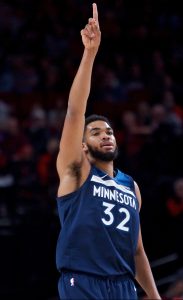
Still, this is a buy-low opportunity for the owners eyeing the Croatian big. He’s had slow starts in the past and he should move into the Timberwolves’ starting lineup once he makes his debut. At least one league executive expects RoCo and The Homie to mesh well with Karl-Anthony Towns and Andrew Wiggins.
Towns is the biggest beneficiary of Butler’s departure from a fantasy standpoint. Expect his usage to settle in the 24-28% range. He’s a borderline top-five fantasy option. If you own Nikola Jokic, Towns represents a slight upgrade and I’d recommend attempting to make that swap.
Derrick Rose remains a fantasy zombie and Jeff Teague becomes a more attractive option after the deal. Wiggins, who is nursing a quad injury, had some mysterious DNPs while the Butler saga inflamed. Expect him to see his usage rise ever so slightly.
Fantasy questions? Take to the comment section below or tweet me at @CW_Crouse.
Missed an earlier edition of Fantasy Hoops? Check out the entire series here.
Photos courtesy of USA Today Sports Images.
